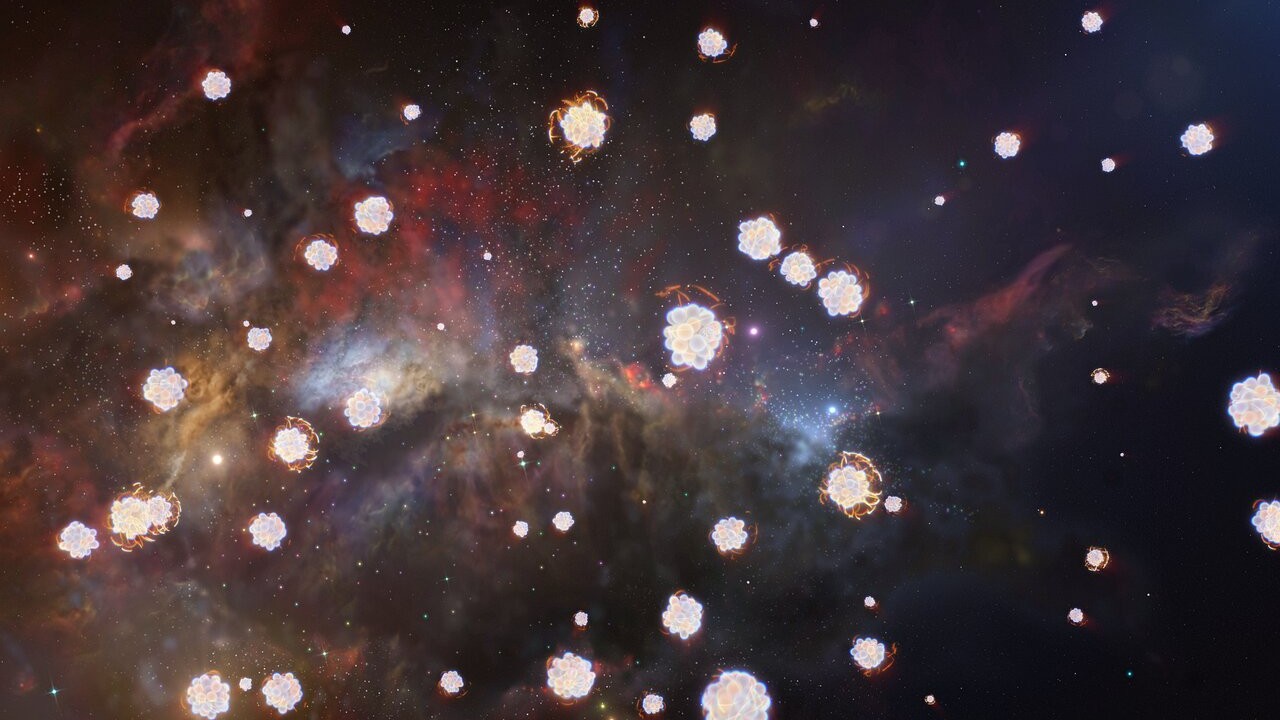Astronomers find remnants of the oldest stars in the universe
A gas cloud 13 billion light-years away may be the resting place of some of the earliest stars in the universe.

Astronomers may have just found the remnants of some of the universe's very first stars. The chemical signatures of these faraway, 13-plus-billion-year-old objects are remarkably different from those of younger stars, like our sun. By studying them, scientists hope to shed light on how stars, galaxies and even basic elements form.
The research, co-authored by University of Florence astrophysicist Stefania Salvadori, was published May 3 in The Astrophysical Journal.
In the earliest days of the universe, only very simple elements such as hydrogen and helium were available. The first stars ignited from these elements alone. Over time, their white-hot cores gradually cooked simple atoms into heavier elements, such as carbon, oxygen, magnesium and eventually metals. Later generations of stars formed from clouds of gas containing these heavier atoms, and today most of the stars scientists observe are rich in metals like iron. (Our sun is about 98% hydrogen and helium, but contains trace amounts of heavier elements like iron, neon and carbon.)
Related: How long do stars live?
Nobody has observed the original metal-deficient stars directly; most of them probably fizzled out or exploded long ago. But scientists can still observe some of their dusty remains by setting their sights billions of light years away.
Using the European Southern Observatory's Very Large Telescope (VLT), Salvadori and her team peered into three distant clouds of star-forming gas. On their own, these clouds wouldn't tell scientists very much, but incoming light from nearby quasars — extremely bright galactic cores formed by dust falling into a supermassive black hole — helped reveal the cloud's secrets. Based on which wavelengths of light the gas clouds absorbed, the team determined what elements the stellar remains were made of.
Sure enough, the clouds were extremely poor in iron and other metallic elements, but rich in carbon, oxygen and magnesium — precisely what would have been left over after the first stars ran out of fuel and exploded, according to the researchers. This tracks with other research into the origins of stars, and may help explain the composition of younger stars, including those found in the Milky Way.
Get the world’s most fascinating discoveries delivered straight to your inbox.
"Our discovery opens new avenues to indirectly study the nature of the first stars, fully complementing studies of stars in our galaxy," Salvadori said in a statement.

Joanna Thompson is a science journalist and runner based in New York. She holds a B.S. in Zoology and a B.A. in Creative Writing from North Carolina State University, as well as a Master's in Science Journalism from NYU's Science, Health and Environmental Reporting Program. Find more of her work in Scientific American, The Daily Beast, Atlas Obscura or Audubon Magazine.


